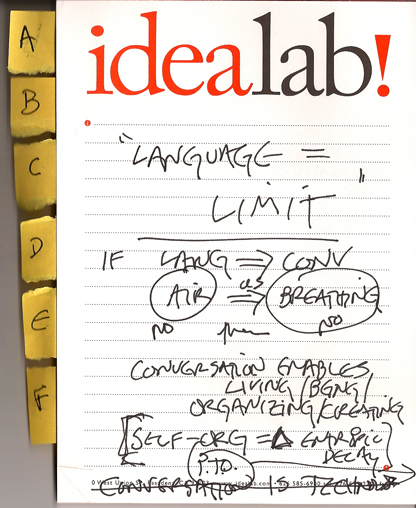Language is to Conversation
as Air is to Breathing
|
|
|
Now, let's go back to possibilities and to question (3): Since the possibilities of conversation come from variety in the conversation, if you had 3 of me here right now it wouldn't be better than having just one of me. If you had 3 product designers and they all just designed Google, it would be redundant, too. But if you had me, and a Google designer, and also you, the variety in the conversation would be richer, and the capacity to create new language would be broader. We would have fewer, or lessened, our limitations. So, please, let's design the conversation. Because if we don't decide explicitly on the variety in the room, then we'll be at the mercy of our participants, at the mercy of what we didn't design. If we're working on a new problem, we need a new language—if we could solve the problem in the old language, we wouldn't need new participants, or new variety. So, then, how do we get new language? How do we get new anything? We start from what we have—Context. We bring whatever shared Language we have, and from there we begin new Exchanges, to create new Agreements —new language. Which may lead to new Transactions, the coordination of action for common goals. Select Tab F in the image to continue. |
BACK to start page. BACK to start page. See additional materials at Designing for Conversation.
|
|
Personal thanks to Michael Dila of Torch Partnership Toronto for sponsoring the workshop and my participation.
